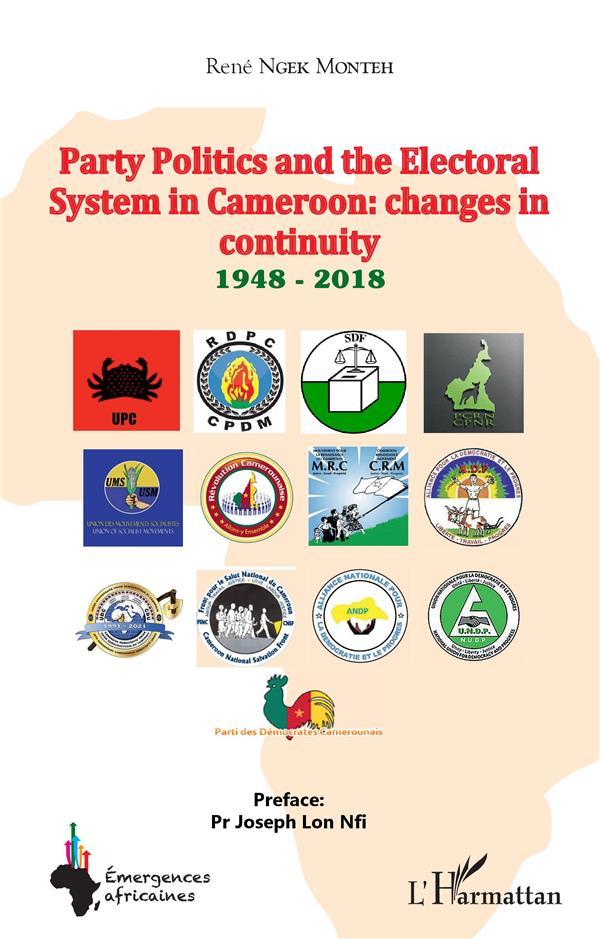Embark on a captivating journey through the labyrinth of European politics, where the heartbeat of democracy pulses with vibrant intensity. Every five years, a continental symphony resounds, a harmonious call to millions of citizens across diverse landscapes—from the sun-kissed Mediterranean shores to the rugged, northern fjords. It’s time for the European Parliamentary elections, a grand democratic spectacle unlike any other. These elections are not just a political procedure; they are a reflection of the collective hopes, dreams, and aspirations of over 400 million eligible voters.
In this world of intricate alliances and geopolitical chess, the European Parliament stands as a beacon of collective decision-making, influencing policies that reach far beyond the borders of its member states. As we stand on the threshold of yet another electoral milestone, let’s unravel the tapestry of history, significance, and procedural nuances that shape this pan-continental event. Join us as we explore ten essential facets of the European Parliamentary elections, shedding light on the marvels and mysteries of this unique democratic process. Whether you’re a seasoned political analyst or a curious bystander stepping into the grand arena of European politics for the first time, this journey promises insights and revelations to enrich your understanding of the world we share.
Understanding the Electoral System
Diving into the heart of European democracy, it’s essential to grasp how voices from the continent translate into seats within its grand legislative chamber. Firstly, the composition of the European Parliament is a vibrant tapestry, representing over 446 million people across 27 member states. This makes it the only directly-elected body in the European Union (EU), a shining beacon of democracy on a continental scale. However, the method of election is not a one-size-fits-all affair; it’s instead a colorful mosaic of proportional representation, primarily, with each country tailoring the exact process to its societal fabric.
Elections to the European Parliament occur every five years, a quintennial festival of democracy where the European electorate takes center stage. During this period, voters across the continent are bestowed the power to shape the EU’s future direction. They do this by voting for candidates from national parties, which after the election become part of broader European political groups. Envision a scenario where political giants and greenhorns alike battle in the arena of public policy and ideology, all for a chance to contribute to Europe’s legislative odyssey.
Key Points:
- Voters elect MEPs (Members of the European Parliament) every five years.
- The Parliament is directly elected and represents more than 446 million people.
- Member States can use a variety of voting systems, as long as they are forms of proportional representation.
- MEPs sit not by nationality but by political affiliation in transnational groups.
Underneath the umbrella of proportional representation lies a fascinating spectrum of electoral practices. For instance, some countries deploy closed lists, where voters choose a party not individual candidates, while others prefer open or flexible lists, offering a granified choice to the electorate. This nuanced approach ensures that small parties can gain representation, crafting a more diverse and comprehensive European Parliament.
| Country | Voting System | Number of MEPs |
|---|---|---|
| Germany | Open List | 96 |
| France | Open List | 74 |
| Italy | Open List | 73 |
| Spain | Closed List | 54 |
| Poland | Open List | 51 |
This table illustrates the diversity in electoral systems and the number of MEPs each country is allotted, showcasing the tailored approach to democratic representation across the EU. As you can see, the blend of open and closed lists among the member states reflects a unique commitment to both individual choice and party strength, embracing the complexity and richness of European democracy.
The Impact of Your Vote on EU Policies
Each vote cast in the European Parliamentary elections wields the power to shape the future of the European Union and its policies. When you vote, you are not just selecting representatives; you are endorsing ideologies and pathways that will determine economic stances, environmental measures, social policies, and much more across the continent. Your vote has the capacity to influence key decisions on topics ranging from climate change to digital privacy, showcasing the direct connection between the ballot box and the policies that govern your daily life.
Consider the remarkable journey your vote embarks upon: from a personal choice to a collective mandate that defines the direction of the European political landscape. The European Parliament plays a critical role in crafting legislation, allocating budgets, and overseeing agreements that affect all member states. It’s a vibrant ecosystem where diverse voices debate and decide on issues impacting millions. Hence, understanding the impact of your vote is akin to grasping the reins of European governance, steering it towards outcomes that resonate with your vision for the future.
Why Your Vote Matters:
- Direct Influence: Elect representatives who mirror your views on pivotal issues such as climate action, digital rights, and economic reform.
- Shaping Policies: Contribute to the major policy decisions that will be made over the next five years in areas including but not limited to trade, security, and public health.
Key Areas Affected by EU Policies:
| Policy Area | Impact Example |
|---|---|
| Environment | New climate targets could be set, influencing national environmental policies across member states. |
| Digital Economy | Regulations on digital privacy and AI usage that set global standards. |
| Trade and Economy | Decisions on trade agreements that shape the economic landscape of Europe and beyond. |
Embrace the opportunity to influence the broad arc of EU policymaking through your vote. Understand that it’s more than a civic duty—it’s a powerful tool at your disposal to mold the future of Europe according to your principles and convictions.
Navigating Party Platforms and Candidates
Understanding the myriad of party platforms and the nuances of candidates’ policies can feel akin to navigating a labyrinth designed by political aficionados for their own esoteric rituals. However, fear not, as there are distinct pathways to making this journey less perplexing. Key to this endeavor is to start by categorizing parties and their candidates based on the broader spectrum of European politics – from left-wing progressives advocating for sweeping environmental policies and social justice to right-wing factions emphasizing national sovereignty and economic conservatism. Breaking down this political spectrum into more digestible pieces allows for a clearer comparison of where each entity stands.
To further simplify this complex landscape, consider utilizing online tools and resources designed to match your personal beliefs and priorities with corresponding parties and candidates. Websites like VoteMatch Europe employ questionnaires to filter through the political noise and provide you with a personalized political compass. Additionally, for a deeper dive, parties usually publish their manifestos online prior to elections, offering a goldmine of information on their visions and promises. Complement this with attending or watching debates, town halls, and reading independent analyses to get a fuller picture. Below is a simple but effective way to start compartmentalizing this information:
| Political Spectrum | Key Focus Areas |
|---|---|
| Left-wing | Environmental policies, social equality, workers’ rights |
| Center | Economic stability, moderate social reforms |
| Right-wing | National sovereignty, traditional values, economic freedom |
Keeping track of these aspects does not guarantee an instant understanding of the complex political terrain of the European Union, but it does provide a starting point. By actively engaging with these materials and tools, you cultivate a more informed, nuanced perspective that transcends the basic dichotomy of left versus right, enabling a more comprehensive grasp of what each party and candidate stands for in the context of European Parliamentary elections.
Recommendations for Informed Voting in the Next Election
Engaging in the European Parliamentary elections is a crucial step towards shaping our shared European future. How you cast your vote not only reflects your current views but also determines the legislative direction of the entire European Union for years to come. With this heightened responsibility, making an informed choice becomes paramount. Here are a few recommendations to gear you up for casting that all-important vote:
- Research Candidates and Parties: Don’t just rely on campaign slogans or social media snippets. Dive deep into each party’s manifesto, understanding their core missions, policies, and how they align with your principles and the future you envision for Europe.
- Understand the Voting System: The European Parliament election system can be complex, with its proportional representation. Take the time to understand how your vote translates into seats within the Parliament, and how this affects party power and coalition possibilities.
- Use Credible Sources: Misinformation can sway elections. Cross-reference news from multiple reputable outlets, official party websites, and the European Parliament’s own resources for the most accurate information.
- Participate in Debates and Forums: Engaging in or at least following debates, both online and offline, can offer insights into candidates’ standpoints on critical issues, helping you to make a more informed choice.
- Evaluate European Impact: Consider not only how candidates and parties will influence your local community or nation but also their proposed policies on wider European issues such as climate change, migration, and economic policies.
A table to help you break down key party positions at a glance might look something like this:
| Party | Economic Policy | Climate Policy | Social Policy |
|---|---|---|---|
| European Greens | Investment in green technologies | Aggressive carbon emission reductions | Expanded social safety net |
| Liberal Democrats | Market-driven solutions | Moderate environmental regulations | Focus on individual liberties |
| Social Democrats | Redistribution of wealth | Renewable energy subsidies | Increase in minimum wage |
| Conservatives | Fiscal responsibility | Pragmatic approach to climate change | Maintaining traditional values |
This simplified table aims to assist voters in quickly comparing the overarching stances of major parties contending in the European Parliamentary elections. Bear in mind, however, that the intricate policy details and party ideologies extend beyond these broad categorizations, urging a deeper dive into each party’s full manifesto and candidate proposals. With Europe’s future at stake, investing time and effort into this research will empower your vote to reflect both your individual beliefs and the collective needs of our European community.
In Conclusion
As the curtain falls on our exploration of the European Parliamentary elections, we leave you standing at the precipice of a vast political landscape, more informed and perhaps more intrigued than before. These 10 facets of the electoral process—each a stroke in the broader picture of European democracy—are but the opening chapters in the grand narrative of a continent’s pursuit of unity, representation, and progress.
The ballots cast in these elections are more than mere pieces of paper; they are the echoes of millions of voices across Europe, each clamoring for a future they believe in. As you move forward, carry with you the understanding that these elections are not just a testament to the power of the vote but a reminder of the continuous effort required to shape a collective future that reflects the diverse tapestry of Europe.
So, as the sun sets on our journey today, remember that the story of the European Parliamentary elections is ongoing, its chapters written with every vote, every debate, and every decision. Keep your curiosity kindled, your knowledge expanding, and your engagement with the democratic process active, for in the intricate dance of European politics, every step, every voice, and every vote leads the way to tomorrow’s horizons.




